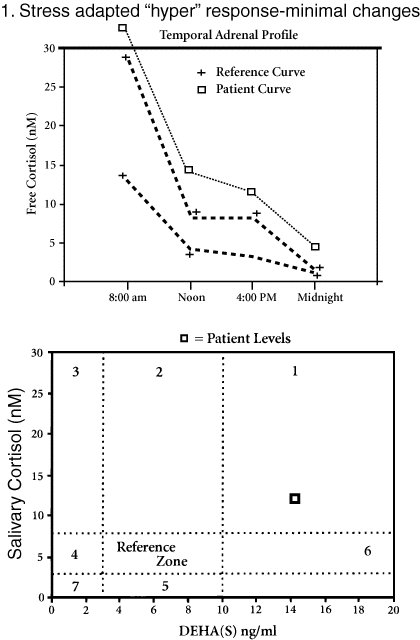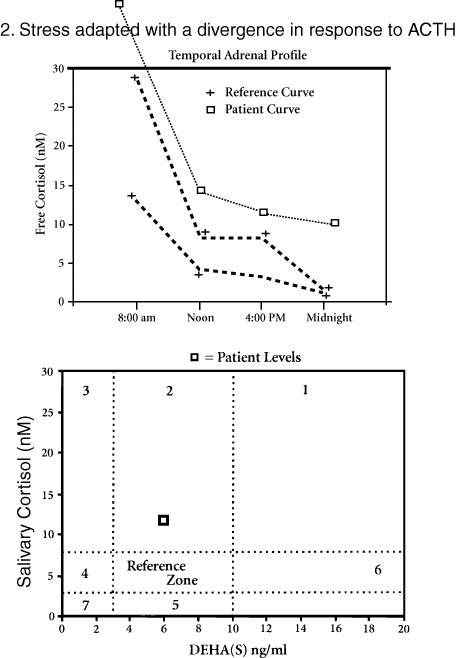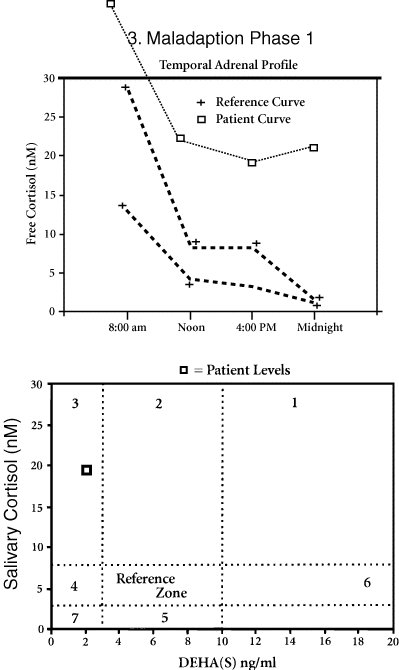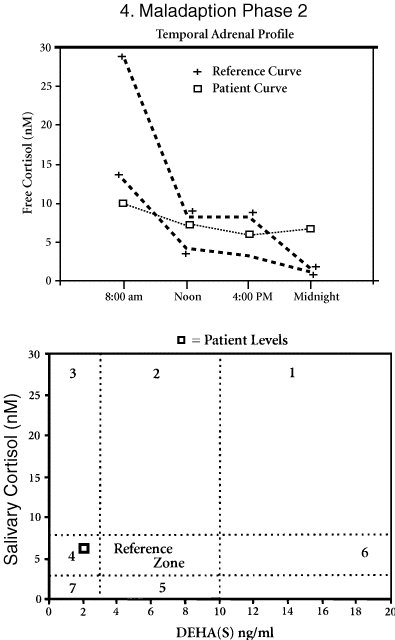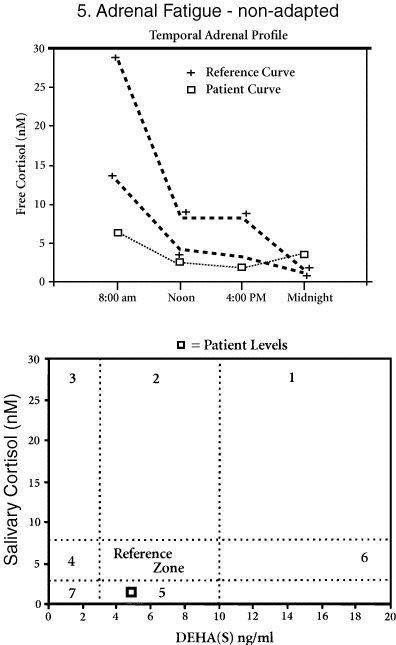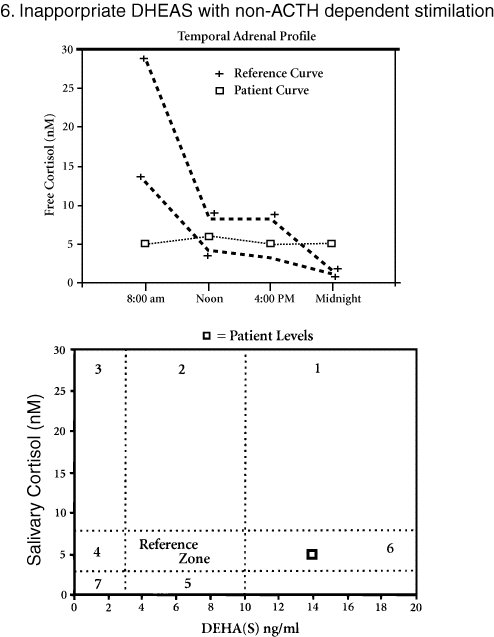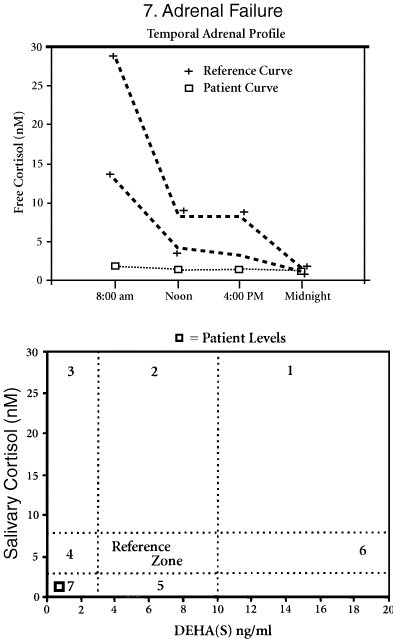Seven Stages of Adrenal Issues
STAGE 1
In this phase, we find the cortisol levels are beginning to rise in an effort by the body to compensate for the stress it is asked to endure. However, we find that the DHEA levels are keeping pace with the Cortisol levels indicating that the body is still balanced its efforts keep up with the stress placed upon it. We rarely see patients at this time. However, when physicians become wise enough to run the ASI test as a screening test, we will be able to detect more and more adrenal weakness at this stage when it is most easily corrected.
STAGE 2
In this phase, we find the cortisol levels are continuing to rise in an effort by the body to compensate for the unending stress it is asked to undergo. However, we also find that the DHEA levels are not now keeping pace with the Cortisol levels indicating that the body is beginning to lose ground in its efforts keep up with the stress placed upon it. ACTH is not affecting the production of DHEA to the same degree that it is Cortisol. The start of trouble.
STAGE 3
It is in this phase that we frequently begin to see our patients. The divergently high Cortisol levels may produce anxiety or even “panic” attacks. The high Cortisol night levels and the low DHEA levels will often create insomnia. Because of ever increasing divergence of the DHEA and Cortisol levels, the patient may experience a strange feeling unique to this state–anxiety and exhaustion simultaneously.
STAGE 4
Now we see a big change from maladaption phase 1. While our DHEA levels may not have dropped too much more, the Cortisol levels have taken a precipitous drop. What has happened is that the body is using up its store of DHEA (the hormone precursor) and simply can no longer maintain the high levels of Cortisol that it had previously. At first glance you may think that this patient is improving since the Cortisol levels are nearer to the reference levels than in Key 3, but this is not the case. The stress on the body is still there, but the material for the body to keep up its Cortisol levels is not.
Notice the low morning levels of Cortisol. These people have a hard time “getting going” in the morning. They become night and afternoon people. With the high night-time Cortisol They often have trouble getting to sleep and may awaken when their blood sugar levels drop (about 3 to 5 am).
Notice that there is very little change in the Cortisol levels. This is a certain sign that the body is in real trouble. We see many patients with this type of reading.
STAGE 5
This Key phase is an extension of Key 4. The Cortisol levels continue to drop even though we find that the DHEA levels rise. This seeming paradox occurs because the body is no longer attempting to adapt and so there is little drain on the DHEA and so these levels rise temporarily. These patients are able to do little. Many are bed ridden due to the extreme weakness they may experience.
STAGE 6
We might consider this key phase as the body’s last gasp to protect itself before it gives up completely. Notice that the DHEA levels rise above normal and in a last ditch effort the body attempts to raise the Cortisol levels again. In this effort, however, the body is out of control and the stimulation is not controlled by the usual manager of this function ACTH. It is rare that we see individuals in this state.
STAGE 7
We trust that we will not see many ASI tests like this one. There is little to say about it. The body has given up and the Adrenal is in a state of near complete failure. Fortunately, the vast number of patients today are helped so that they do not end up in this phase. What is difficult to do, and takes great care and understanding of the nature of these Key phases, is to return a phase 2 to 5 back to normal. This is the real challenge to all physicians who desire to treat this condition.
NOTE: all the above was on a particular website I used to send folks to, which is now gone and changed. 🙁 I was lucky to still have this.
Important notes: All the information on this website is copyrighted. STTM is an information-only site based on what many patients worldwide have reported in their treatment and wisdom over the years. This is not to be taken as personal medical advice, nor to replace a relationship with your doctor. By reading this information-only website, you take full responsibility for what you choose to do with this website's information or outcomes. See the Disclaimer and Terms of Use.
